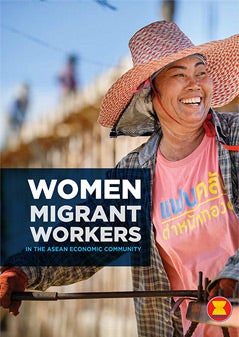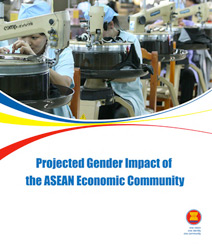Preventing the Exploitation of Women Migrant Workers in the ASEAN
(June 2014 through December 2017)

The UN Women Regional Office for Asia and the Pacific, in partnership with the International Labour Organization and IOM X (the International Organization for Migration's innovative campaign to encourage safe migration and public action to stop human trafficking and exploitation), with support from the Australian Government Department of Foreign Affairs and Trade, commissioned the 'Preventing the Exploitation of Women Migrant Workers in the ASEAN' project. The project aims to work in partnership at the regional and national levels for the protection of women migrant workers and prevent their abuse, violence, trafficking and exploitation.
The project's three identified strategic areas include:
- Enhancing access to evidence and knowledge about the gender dimensions of labour exploitation and unsafe migration as inputs to national and regional policy development. The collaboration with the ASEAN secretariat is focused on the generation of this information;
- Normative and evidence-based policy advocacy in order to enhance the capacities and accountability of ASEAN state actors to prevent the exploitation of migrant workers; and
- Social mobilization and campaigning that includes the strengthening and peer support of young women in sending areas. It also aims to equip migrant women workers with new knowledge, enabling freer movement and preventing exploitation by employers.
The project reduces the exploitation of women migrant workers in the ASEAN by identifying women's gender vulnerabilities and advocating for gender-sensitive national and regional policies to safeguard women's rights.
As of November 2017, the project has issued four publications: Projected Gender Impact of the ASEAN Economic Community; Worker, Helper, Auntie, Maid?; Protected or Put in Harm's Way; Women Migrant Workers in ASEAN Economic Community and a Policy Brief Series on Women's Labour Migration in ASEAN.
UN Women has rolled out social mobilization and campaign programmes in close coordination with its county offices. In Myanmar airports, essential materials for safe migration were distributed to migrant workers at Myanmar–Thailand border checkpoints. In Lao PDR, UN Women encouraged peer education through the mobilization of youth groups, including through plays that raised awareness on safe migration and women migrant worker's rights. In Cambodia, information and communications technologies were applied to develop mobile apps to promote safe migration and to provide psychosocial support.
Related news
Featured Publication

Women Migrant Workers in the Asean Economic Community
Free movement of skilled labour, which takes into account relevant domestic regulations and market demand conditions, is a key component of this regional economic integration agenda. ASEAN main destination countries... Read more
